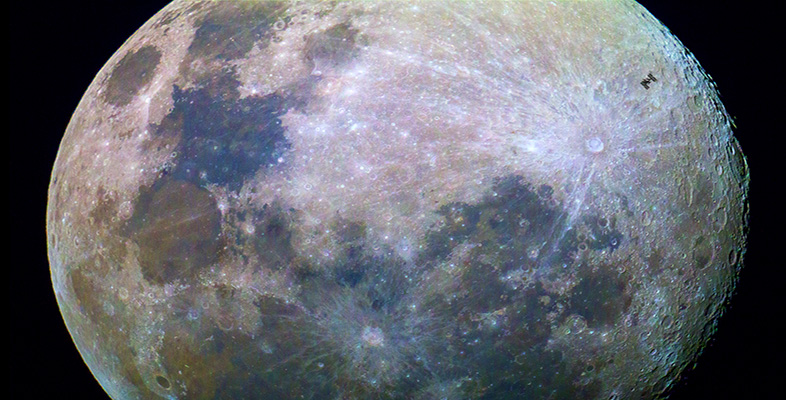2.5 The interior
David A. Rothery Teach Yourself Planets, Chapter 6, pp. 66-75, Hodder Education, 2000, 2003.
Copyright © David Rothery
The Moon is the only planetary body other than the Earth for which we have any seismic data that can tell us about its interior. Seismic stations were established at the Apollo 12,14, 15 and 16 sites, which continued to send back data until September 1977 when operations were terminated for budgetary reasons. The Moon is seismically very quiet compared to the Earth, with moonquakes being many orders of magnitude less powerful than typical earthquakes. The Apollo seismometers also detected the vibrations from deliberate crashes of various expended units of the Apollo spacecraft and from meteorite impacts, including one from the far side that gave crucial data on the maximum possible size of the lunar core.
The picture that has emerged from combining Apollo seismic data with topographic and gravitational mapping by Clementine and Lunar Prospector is as follows. The Moon's crust is on average about 70 km thick, but exceeds 100 km in some highland regions and falls to about 20 km thick below some impact basins. The crust is thicker on the far side, with the result that the Moon's centre of mass is offset from its geometric centre by about 2 km toward the Earth.
The mantle is rigid to a depth of about 1000 km, which is also the greatest depth for the source of moonquakes, so this marks the base of the lunar lithosphere, below which it is probably slowly convecting. Like the Earth's mantle, that of the Moon is approximately peridotite in composition, though there are signs that it varies in detail from region to region.
The Moon's core is between about 220 and 450 km in radius (so the core-mantle boundary is at least 1290 km depth), and is probably iron-rich and solid. It makes up less than 4 per cent of the Moon's total mass, a much smaller fraction than for any of the other terrestrial planets. This can be explained by computer models of the giant impact in which the Moon was born. These show the core of the impacting body accreting onto the core of the proto-Earth, whereas the Moon formed from the mixture of fragments of the two bodies' mantles that were thrown into space. There is no magnetic field generated in the Moon's core today, showing that it must be solid. However, there are local weak remanent magnetic fields associated with some of the Moon's major impact basins, which suggest that part of the core may still have been liquid and generating a global field when these formed 3.6 billion years ago.
